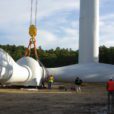An Assessment of U.S. Climate Alliance States’ Climate Action Plans
This white paper analyzes the trends and comprehensiveness of 2030 state climate action plans. Specifically, between January and April 2021 the Climate XChange research team mapped and identified the occurrence rate of close to 50 “Building Blocks” of state climate policy, as defined by Climate Cabinet Education. Currently, only 18 out of 24 U.S. Climate Alliance (USCA) states have released draft or final plans to meet 2030 greenhouse gas (GHG) reduction targets. The exercise revealed state climate action plans driven by legislative directive are approximately 13 percent more comprehensive than those driven by executive order alone. While there is a key distinction between climate action plans and policy implementation, establishing targets, limits, and timelines through planning is an essential start. States are key junctures for climate policy, public spending, and economic transformation, meaning they have immense opportunity to tackle the climate crisis, revitalize the economy, and advance justice through climate action. Thus, it is valuable to assess the comprehensiveness of existing state climate action plans to identify the trends and political forces that may lead to improvements.
Background
The Biden Administration has pivoted the United States back toward opportunities for climate leadership. First, President Biden announced a national commitment to realign the U.S. to the Paris Agreement on his first day in office. Even further, he set a national greenhouse gas pollution reduction target on April 22nd, 2021 to achieve a 50–52 percent reduction in U.S. emissions from 2005 levels by 2030. Collaboration among various levels of government — federal, state, and local — will be imperative for the U.S. to achieve the upcoming national 2030 target.
States must now capitalize on the critical opportunity for climate action. While progress stalled under the previous administration when former President Trump withdrew the U.S. from the Paris Agreement in 2017, a bipartisan coalition of now 24 member states formed an institutional body, the U.S. Climate Alliance, in response. The USCA works to assist states in aligning climate commitments with the Paris Agreement and transitioning effectively to a clean economy. So far, only 18 out of 24 member states have gone as far as authoring and releasing climate action plans to outline which policies will enable them to meet future climate commitments.
Virtually every state government must follow the procedural steps of establishing greenhouse gas reduction targets and developing a comprehensive plan to meet that target. However, a December 2020 Environmental Defense Fund Report finds that nearly every state with a climate commitment has implemented insufficient policies to remain consistent with the Paris Agreement and the IPCC’s 1.5℃ target to avoid the most severe impacts of climate change. Thus, an exercise to understand the creation and composition of state climate action plans serves to illustrate trends and political forces that define how various states across the US intend to find success in the transition ahead.
Overview
The white paper assesses the comprehensiveness of state climate action plans among 18 U.S. Climate Alliance states. To measure the “comprehensiveness” of a state climate action plan, the occurrence rate of close to 50 individual “Building Blocks of State Climate Policy” was tracked. Importantly, this study does not assess the “quality” of each individual policy as written in a state climate action plan, rather it serves to quantify the occurrence of a defined set of the highest-priority state climate policies.
The Building Blocks of State Climate Policy functions as “a framework of the highest-priority policies state legislatures can enact to tackle climate change — with a focus on job creation and justice” (Source: Climate Cabinet Education.)
We’re thrilled to see our “Building Blocks of State Climate Policy” toolkit being put to use not only by state legislators, but groups doing critical research and legislator support, like Climate XChange. — Caroline Spears, Executive Director of Climate Cabinet Education
Learn more about the “Building Blocks of State Climate Policy” Here
Next, the analysis tracks two key political factors in the creation of state climate action plans. The factors include: the action plan authorship (whether the document was produced by a governmental body or a quasi-governmental body) and the political source of climate action (whether originating from executive order, legislative statute or a combination of both).
Two Key Political Factors Analyzed
- Action Plan Authorship: Governmental or Quasi-Governmental
- Political Source of Climate Action: Executive Order, Legislative Statute, or Both
Key Findings
1. Legislative Directives Lead to More Comprehensive Climate Plans
Evidence suggests states with climate ambition driven by legislative statute have more comprehensive climate action plans than states driven by executive order alone. As shown in Table 1, states driven by executive order alone included, on average, 31 out of 49 Building Block policies. In contrast, states with legislative statutes included, on average, 35 out of 49 Building Block policies, meaning they are 13 percent more comprehensive than climate plans driven by only executive orders. Notably, these trends persisted regardless of whether the author of the state climate action plan was a quasi-government body (such as a climate action council) or an official state agency (such as an energy or environmental office)
There are several speculated drivers behind the observed difference in the number of policies or “Building Blocks” identified in state climate action plans. Perhaps varying degrees of enforceability and accountability between legislative commitments compared to executive orders influence the comprehensiveness or extent of state planning. With heightened incentives, greater opportunity for public engagement, and increased time and dedicated personnel, passing legislative directives is a powerful force in facilitating comprehensive state climate action planning.
Table 1: Comprehensiveness of Climate Action Plans by Source
Executive
Average Number of Building Blocks
31.3
Number of States
8
Legislative
Average Number of Building Blocks
35.3
Number of States
10
2. Universal or Foundational Measures
State specific approaches to climate action vary, but there are standard practices shared among states planning a just transition. Specifically, eight Building Blocks appeared in virtually every state climate action plan (≥94% occurrence rate). Rather than a complete suite of climate policy, these policies represent standard and most frequently observed policy options identified in state planning. They may represent highly accessible policies for new states to begin with, since they are universally considered across geographic and political conditions. The most common Building Blocks seen in Table 2 encapsulate the types of policies that most, if not all, states work to include as components of their climate action plans. It is important to note that, on average, state climate action plans included 68 percent of the 49 policy Building Blocks, thus they most often include far more than just these eight foundational policies.
These standard, shared practices may be demonstrating policy convergence — a phenomenon where a policy increases in adoption rate and uniformity across different state governments over time. Political science literature finds that the most popular policy choices among states are prime candidates for policy convergence. Thus, the most common state climate policy options may represent high potential for policy convergence through increasing similarity among member states and beyond. Perhaps these shared policies may continue to proliferate to other state governments without a released climate action plan or even the Federal Government in the years ahead.
Table 2: Description of Most Frequently Occurring Building Blocks
Renewable Portfolio Standards
Sets benchmarks for the generation of renewable or clean electricity statewide
Frequency of Observation
100%
Energy Efficiency
Promotes energy savings
Frequency of Observation
100%
Building Energy Performance Standards
Establishes long term goals to reduce building energy consumption or greenhouse gas emissions
Frequency of Observation
100%
Transportation Electrification Plans
Charges states and utilities to prepare for and advance electric vehicle adoption in their service area
Frequency of Observation
94%
Expand Electric Vehicle (EV) Infrastructure
Increases public investment in EV infrastructure to encourage EV adoption and minimize range anxiety
Frequency of Observation
94%
Waste Reduction
Discourages food waste and associated emissions, promote composting
Frequency of Observation
94%
Support Local Governments in Resilience and Disaster Planning
Provides resources and education to local governments to help prepare their communities for climate-related disasters
Frequency of Observation
94%
Natural and Working Land Management
Conserves existing public lands and forests to sequester carbon, increase biodiversity and resilience, and provide tourism opportunities
Frequency of Observation
94%
3. Areas for Improvement
Finally, there are a number of policy options frequently missing from U.S. Climate Alliance state plans that the team identified as high potential areas for improvement. The following policy options offer the potential for high marginal progress, the promotion of public health co-benefits, and improved, informed decarbonization trajectories needed to meet future climate commitments:
- Indoor Air Quality Standards (IAQs)
- Disaster Preparedness and Response Measures
- Socal Cost of Carbon (SCC)
- Benchmarking and Transparency Requirements
Conclusion
Without a doubt, states face a critical opportunity to take climate action, revitalize their economies, and advance justice through comprehensive planning. While policy planning is fundamentally separate from implementation, climate action plans are absolutely needed to establish the unique trajectory that best serves each state’s people, economy, and ecosystems. This exercise revealed state legislative statutes facilitate more comprehensive planning, as measured by wider suites of climate policies, to achieve the quantifiable reductions in greenhouse gas emissions needed to meet future 2030 climate commitments across all levels of government.
Future research could investigate other drivers of these findings, particularly the role of a state’s energy mix, its local industry influence, and its political conditions. In the end, each state’s approach to climate action planning is multi-faceted, unique and contextual but it is clear that there is still immense opportunity for states to continue to improve and learn from one another.
Climate XChange’s review of climate action plans is fascinating, and clearly highlights which “Building Blocks” require more education – among policymakers and the climate community. We’re excited to continue working together to ensure legislators have the resources they need to pass bold, equitable, urgent climate policy. — Emma Fisher, Head of Strategy of Climate Cabinet Education
Learn more about Climate Cabinet Education Here
Featured Image: Amanda Griffiths Pontillo, Climate XChange. Smoke photo by Photo by Thijs Stoop. Wind turbine photo by Photo by Dev Kalidhasan.









